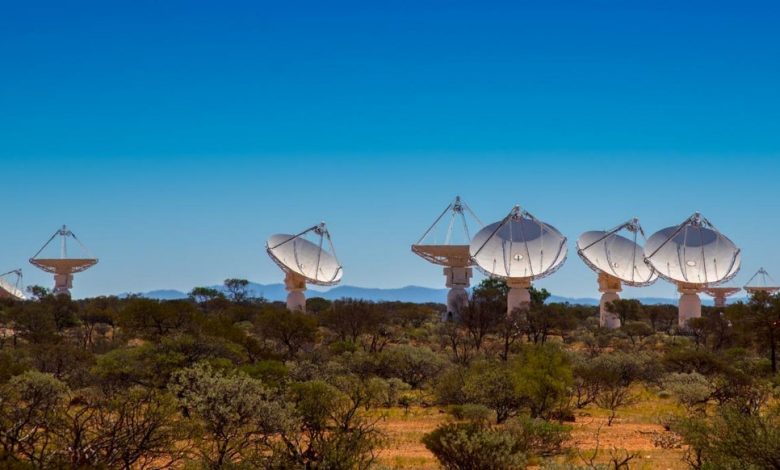New ‘physics-defying’ radio bursts in space leave astronomers stunned

Scientists have observed a series of large, low-frequency radio wave-emitting objects about 800 million lightyears away which they said appear to “defy” the laws of physics.
The radio wave emitting objects include “a fossil radio emission, a radio relic and a radio halo” within the Abell 3266 galaxy cluster, according to the study, published on Monday in the journal Monthly Notices of the Royal Astronomical Society.
The “faint to detect” objects were discovered by applying a complicated algorithm to images taken by radio and X-ray telescopes, said researchers, including those from the University of Western Australia.
“They defy existing theories about both the origins of such objects and their characteristics,” scientists wrote in The Conversation, describing the discovery.
When galaxy clusters collide with each other, huge amounts of energy are put into ionised gas or plasma, generating emissions in the radio wavelength in a variety of shapes and sizes, scientists said.
One such example is radio relics, which they explain are arc-shaped and sit towards a cluster’s outskirts.
These are powered by shockwaves travelling through the plasma, which astronomers said cause a jump in density or pressure, and energise the particles.
Radio halos are irregular sources that lie towards the centre of a galaxy cluster, powered by turbulence in the hot plasma.
Both halos and relics are known to be generated by collisions between galaxy clusters, but much of their details remain a mystery, researchers explain in The Conversation.
Fossil radio sources, on the other hand, are leftover radiation from the death of a supermassive black hole at the centre of a galaxy.
In the study, researchers analysed the radio relic of Abell 3266, which they said was unlike any radio object scientists have ever seen before.
They found that it had a highly unusual concave shape, earning it the nickname the “wrong-way relic.”
“Overall, our data break our understanding of how relics are generated, and we’re still working to decipher the complex physics behind these radio objects,” scientists wrote.
“Our best physical models simply can’t fit the data. This reveals gaps in our understanding of how these sources evolve – gaps that we’re working to fill,” they said.
While the new study has shed more light on these mysterious cosmic entities, researchers said the findings also raise more questions.
“Further work is required to fully unpack the history of Abell 3266 and its constituent radio galaxies, and the answers to a number of questions remain elusive,” the researchers wrote in the study.



